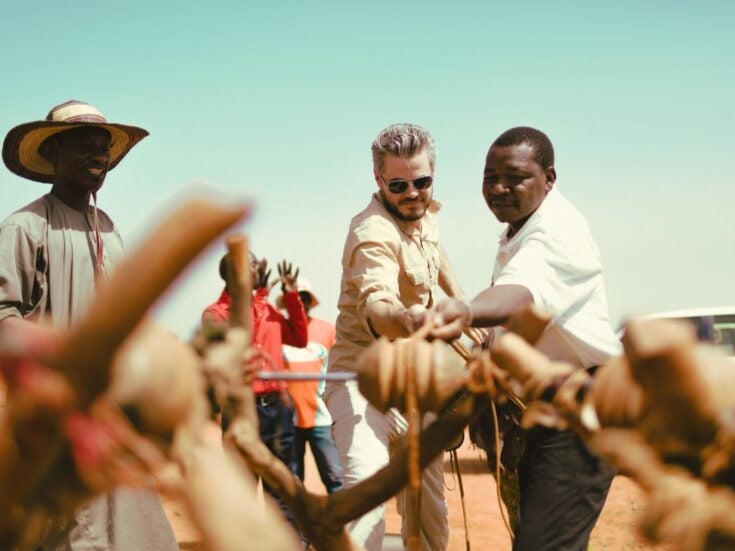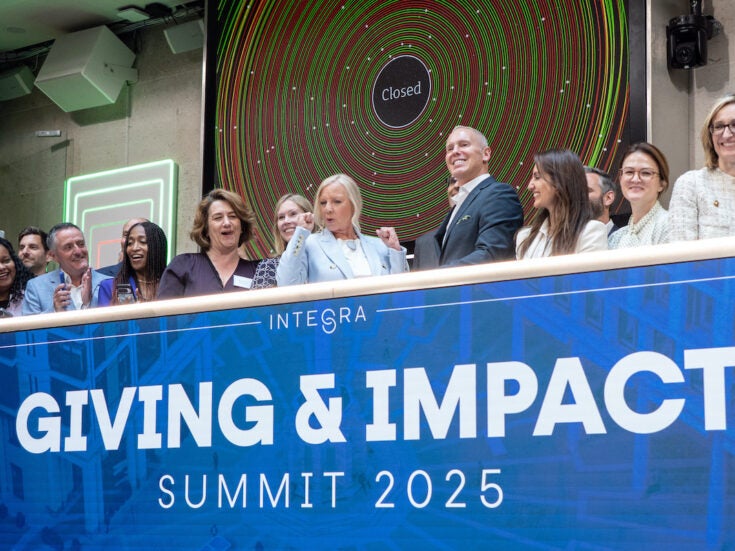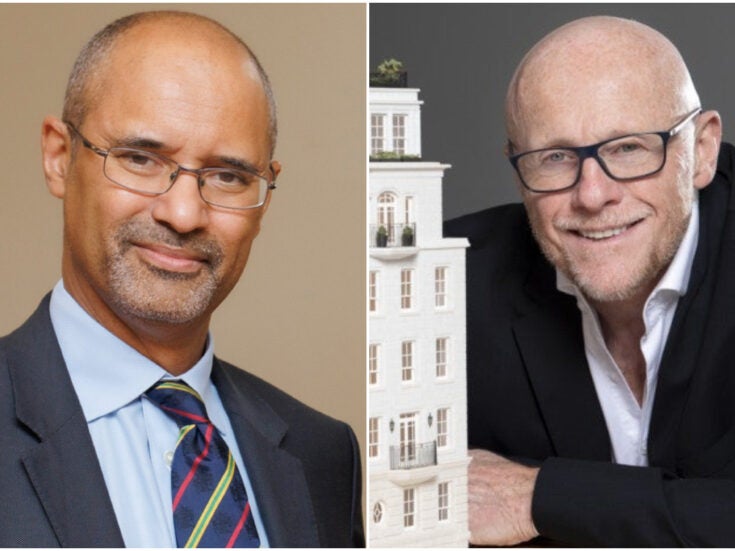
The Kids Are All Right
It’s not all Rizzle Kicks and late nights at Whisky Mist — some in the next gen are turning to philanthropy as a fulfilling occupation and a chance to learn about wealth. By Josh Spero
IT’S A FAMILIAR story. A high-net-worth, who made his money in agriculture and had come to own a significant estate, gives one of his sons — a demanding, feckless kid — too much money far too early in life. The son lives the high life and wastes it all, only to return in shame. The father forgives him, infuriating the prudent son who stayed at home and worked in the family business. What Luke the Evangelist didn’t consider in this story is that if the father had got the prodigal son involved in the family charitable foundation, there would probably not have been a problem.

A radical approach to theology, you might well argue, but one that is borne out by the philanthropists of the current and ‘next’ generations Spear’s spoke to: philanthropy has come to be seen as a preparation for a life with wealth. Learning how to give comprises valuable skills: picking well-run charities, reading their balance sheets, studying their effectiveness and negotiating with other interested parties (ie your family) over how much to donate.
Philanthropists are recognising this. At the Spear’s/Speechly Bircham/Cazenove Capital philanthropy seminar (page 22), Ian Watson, a mining and agricultural entrepreneur, said he included his daughter Lucinda in the family foundation’s work because ‘we wanted her to learn about giving money with the proper consideration, and giving it so that it’s of benefit to the person receiving it. Having a family foundation is exactly the way to do that.’
Lucinda Watson says her introduction to her family’s philanthropy was through working with charities they supported without the Watsons’ funding being made an issue; charity became a natural part of her growing up. Then, ‘two or three years ago, my parents started talking about the Watson Family Foundation. They said they’d love for me to be involved if I wanted and I said yes. They didn’t want to discuss the money until I was 21.’ When she turned 21 last summer, they accepted her on to the board.
SO WHY ARE the next gen now interested in philanthropy? Maya Prabhu, who is executive director of Philanthropy Services at Coutts, says that they have such a wide exposure to the world’s problems — through travel, through the media, through their parents — that it would be hard for them not to understand that they can play a part.
But also at the philanthropy seminar, John Studzinski, who has 43 godchildren, said a balance needed to be struck between letting interested children get involved and treating them as full partners: ‘The smartest thing parents can do is never let their children know how much money they have until at least they’re 30 or 40.’ Instead, giving a child a lump sum and letting them donate the income from it is a practical and not unduly revealing approach, he suggested. ‘I saw this with some children, and by the time they got to 25 or 30, when their inheritance became more of an issue, they had a sense of giving,’ and presumably they were less thrilled or intimidated by wealth coming their way.

For the next gen, the money they know will descend on their heads one day is less self-evidently a blessing than a burden, but philanthropy seems to be one of the ways they can learn to esteem it at its proper worth and potential. Aphra Sklair of the Institute for Philanthropy talks about philanthropy turning ‘feelings of responsibility about your wealth into feelings of opportunity’.
PRABHU RUNS THE social impact component of the bank’s Future Leaders Programme, which is a week-long programme for 21- to 25-year-olds covering topics like entrepreneurship, personal development and finance. Participants get to visit different charities that suit their interests, such as East London microfinance bank Fair Finance for the business-inclined ones. Sitting in Coutts’ quiet garden-lobby, she says that philanthropy enables the next gen to perceive the manifold strands of wealth: ‘If we think about our wealth holistically as our financial capital, our human capital and our social capital (how we engage with society around us) and develop all three, we see there is much more likelihood of being fulfilled as an individual and being good stewards for that wealth as well.’
‘Stewardship’ is a key concept here. Tim Good, who is in the sixth generation of the John Good Shipping family and went on the Institute for Philanthropy’s next gen course, says involvement in the Matthew Good Foundation, which funds philanthropic projects submitted by people who work in the business, allowed him to see his family’s wealth beyond himself: ‘It gives me an insight into what the wealth is and who it belongs to. Rather than just thinking that my wealth will buy me a car, it makes you realise that this wealth isn’t really yours: it belongs to the community as a whole.’ You need to put something back into the community your business takes from, he says. Good says he tries to help those submitting requests think about their project in an entrepreneurial way, developing his own mentoring and strategic skills; indeed, were he not already a businessman — he founded nothingbutpadlocks.com — he says these lessons would be invaluable.
WORKING TOGETHER ON a foundation is also a way to bridge the generation gap, not least by ensuring that there is regular communication within the family. Instead of parents initiating an agonising touchy-feely conversation, younger members of the family can bring up causes they care about in the context of funding them. Maya Prabhu said she was once doing an introduction to philanthropy for a family when one son said he wanted to support charities dealing with violence against women because a friend at university had been the victim of date-rape. ‘His parents almost fell off their chairs — they thought, “Goodness me, where has this come from?” That gave the parents a unique insight into an area they hadn’t really talked about.’
Similarly, Lucinda Watson introduced her parents to environmental causes; Ian Watson said he had sympathy for green charities but it was entirely Lucinda’s impetus which led them to contribute. It’s not as simple as asking the family foundation for money: ‘They told me, “You have to find specific charities, you have to research them. You have to learn how it’s run, tell us why it’s important.”’ She will be presenting her case for money later this year. Lucinda also went on a week-long camp in America run by Partners for Youth Empowerment, which trains young people to be mentors, and her parents were sufficiently impressed to fund its rollout around the world.

Tim Good feels that it helps his family communicate: ‘We’re able to get together and talk about things that aren’t business-based,’ such as his commitment to conservation. ‘It’s a hell of a lot more interesting to talk about around the dinner table than our sales targets.’
<strong>ONE FACET OF philanthropy which is engaging the next gen is social enterprise, which has a double bottom line: social and financial returns. Making money out of a charity appears unseemly to some, but it is a concept younger donors are embracing, and some are forgoing predictable careers to work in social enterprise, gaining both business and philanthropic experience.
It’s quite obvious to the younger generation, says Aphra Sklair of the Institute for Philanthropy: ‘The next generation seem to more naturally accept the idea of social business. Having grown up with the idea of fair trade, for example, it might come to them more naturally that businesses might have social responsibility — it’s not just about making money in this place and giving it away in that place. The older generations are saying to us, “I never even thought I could make my investments work for social and environmental benefit.”’ The next gen want to ‘integrate their lives across the whole spectrum’ of work, social life and charity.
Someone who has proved that this integration is possible is Silja Andersen, in her family’s fifth generation and now chairman of her family’s forestry company in Denmark and head of Individual Giving at the Big Issue Foundation. The BIF recycles all its profits to help more of its vendors rebuild their lives, making it one of Britain’s longest-standing social enterprises. Silja has previously written that the next gen have often grown up with separate traditions of family business and philanthropy, but they recognise that the two have much in common — ‘innovation, sustainable growth, deep community roots, entrepreneurship and family values’ — which can be combined in social enterprises.
This business-minded approach to social enterprises can be applied to all charities, says Aphra Sklair: ‘Many questions are coming up these days about measuring impact. Value for money, especially in these resource-straitened times, is important.’ What is clear from the next gen’s philanthropic engagement is that value for money means a lot more than just a charity’s efficiency — it also means getting the most out of your wealth.
Read more by Josh Spero
Illustration by Phil Wong






